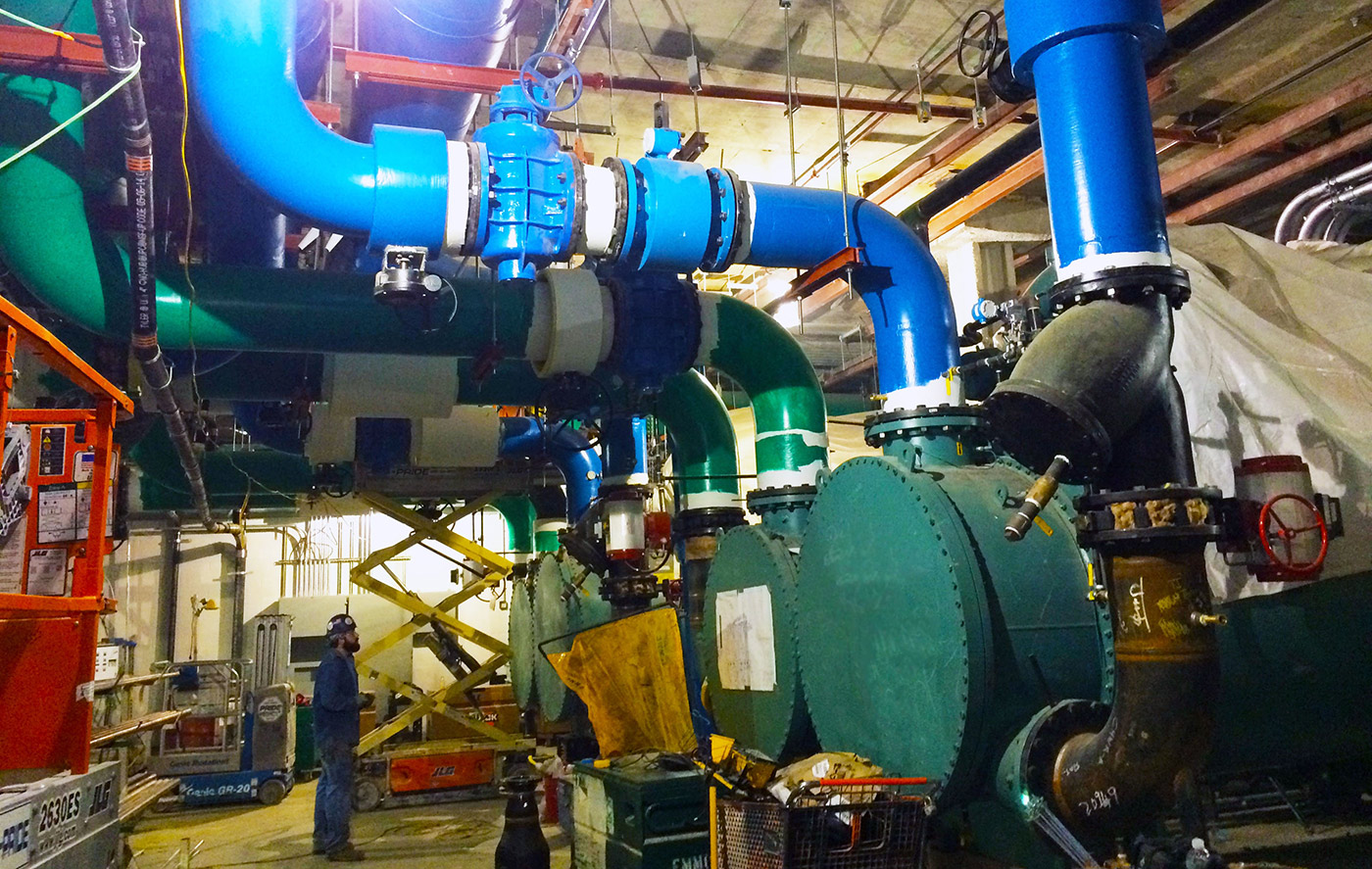
Columbia University Facilities and Operations Behind the Scenes - The Central Plant
The Columbia University campus is like a small city in looking at the diversity of activities taking place, from offices to research labs, housing to food venues, and more.
How does the university provide temperature control and humidity in sensitive lab settings and maintain comfortable temperatures in classrooms, offices and residence halls on the Morningside campus - reliably, sustainably and cost effectively?
To the average person, the question may sound like a riddle. The actual answer is not far from one, either.
The complicated solutions and inherent challenges in meeting the diverse and demanding utility needs of a 120 year-old campus spread across 32 acres and covering 63 buildings and more than 6.5 million square feet energizes the engineers and professionals in Facilities and Operations responsible for this often forgotten but critical part of supporting a leading research university.
Central Plant
The original Morningside campus design in 1896 included a district energy system. The system, which was advanced for its time, built infrastructure able to deliver low-pressure steam produced at a central plant for heating across campus while cogenerating electricity.
As technology advances and new concepts arise - such as air conditioning and chilled water becoming more mainstream in the middle of the 20th Century and the focus on sustainability in recent history - so too does the need to reexamine the campus infrastructure plan.
By 2007, aging equipment, inefficient systems, additional capacity requirements, new NYC compliance laws, and new sustainability goals all contributed to a need to reassess the campus's utility needs and objectives, and evaluate how the current system and equipment was meeting them.
Born from there was the development of a central energy plant master plan.
Updates in FY15
Changes and investments since then have aligned with the objectives and strategies of the master plan - including work undertaken in FY15. Highlights of work done in FY15 for multi-year projects related to the district energy system were:
- Continuing construction of a new 2,800-ton steam-powered chiller for the central chilled water plant. This new chiller, anticipated to be available for production starting in June 2016, is the third of four new chillers (two electric, two steam) which in total will eventually consolidate all campus chilled-water production in the central chilled water plant below Uris Hall located in the space of the campus's original powerhouse.
The central chilled water plant and associated optimization project will provide a 16,300-ton capacity and offer flexibility between electric and steam production. - Began the process of refurbishing the main boilers in the central steam plant, some of which are nearly 30 years old. Located in the sub-basement of the CEPSR building, the retrofit consists of rebuilding the boilers in place with new low nitrous oxide burners, modernized controls, new economizers and forced draft fans, and other associated support equipment, replacing everything but the boilers themselves. One boiler has been completed with plans ahead to refurbish two more, resulting in a more efficient and reliable operation of the boiler plant along with a significant reduction of emissions. Part of this process also involved bringing two fuel tanks back in service to increase onsite storage capacity.
- Addressed a chilled water supply issue in one of the university's core research areas by creating a direct path to deliver chilled water to Fairchild from the central chilled water plant. The new line, which includes 14 inch piping, addresses a longstanding chilled water bottleneck in the northeast corner of campus that was constrained by the smaller, original pipes at Mudd. The new piping not only relieves the supply issue at Fairchild but also provides a second supply line to backfeed into Mudd and saves energy by lessening the demand on water pumps.
- In complying with New York City's Local Law 87, which requires that buildings over 50,000 gross square feet undergo periodic energy audits and a review to make sure equipment is installed and operating correctly (a process known as retro-commissioning), Facilities and Operations has been addressing issues in the 73 buildings on campus impacted by the law while making recommendations for additional energy-saving measures at those buildings and other academic buildings.
Among the changes include installing energy meters for electricity, chilled water, steam and domestic water for 30 academic buildings. Metering allows for a collection of energy data to inform decision making, which will help support the work of a new committee on sustainability that has been formed at the university. On the Morningside campus, in excess of 150 meters have been installed.
The Future
Looking ahead beyond these multi-year projects, the plant engineering team is developing plans and assessing feasibility to deliver chilled water to the southeast side of campus, and is also developing plans for a cogeneration plant (combined heat and power). The cogeneration plant would be located in the CEPSR sub-basement.
"The efficient and reliable operation of the campus's district energy system is an often forgotten but vital service supporting the university's core research mission," said Frank Martino, vice president of Facilities Operations for Columbia University Facilities and Operations. "The Facilities and Operations team is excited about the improvements that we are making to the central plant, not only because the engineering challenges require us to develop innovative solutions, but also because we know that we're making a positive impact for the faculty, students, and staff."

